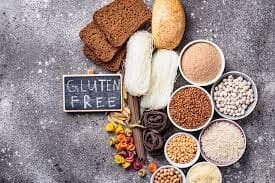Gluten-Free Diet: Benefits, Ingredients, and Practical Usage
The gluten-free diet has surged in popularity in recent years, but its purpose and benefits extend far beyond just a trendy fad. This article delves into the world of gluten-free living, exploring its potential health advantages, key ingredients, and practical tips for incorporating it into your daily routine.
What is Gluten?
Gluten is a protein composite found in grains like wheat, barley, rye, and triticale. While harmless for most individuals, it triggers an immune response in people with celiac disease, an autoimmune disorder. Additionally, some individuals experience non-celiac gluten sensitivity, leading to digestive discomfort upon consuming gluten.
Benefits of a Gluten-Free Diet:
While not a magic bullet for weight loss or a cure-all for various ailments, a gluten-free diet offers specific benefits for individuals with:
- Celiac Disease: The only effective treatment for celiac disease, a gluten-free diet alleviates symptoms like bloating, fatigue, and diarrhea, promoting gut healing and preventing long-term complications.
- Non-Celiac Gluten Sensitivity: For individuals experiencing digestive discomfort after consuming gluten, going gluten-free can significantly improve gut health and alleviate symptoms.
- Potential Additional Benefits: Research suggests that a well-planned gluten-free diet may offer potential benefits for managing certain conditions like irritable bowel syndrome and even improving overall well-being in some individuals.
Essential Gluten-Free Ingredients:
Embarking on a gluten-free journey doesn’t have to mean sacrificing flavor or variety. Here are some key ingredients to explore:
- Natural Gluten-Free Grains: Embrace naturally gluten-free grains like quinoa, brown rice, millet, sorghum, and oats (certified gluten-free).
- Starchy Alternatives: Explore nutrient-rich alternatives like potatoes, sweet potatoes, cassava, and arrowroot flour for baking and thickening.
- Gluten-Free Flours: Utilize a variety of gluten-free flours like almond flour, coconut flour, chickpea flour, and tapioca flour to create delicious baked goods.
- Protein Sources: Lean on naturally gluten-free protein sources like lean meats, poultry, fish, beans, lentils, and nuts.
- Fruits and Vegetables: Don’t forget the power of fruits and vegetables! They are naturally gluten-free and provide essential vitamins, minerals, and fiber.
Practical Usage Tips:
Transitioning to a gluten-free lifestyle can be smooth sailing with these helpful tips:
- Read Food Labels Carefully: Always scrutinize food labels for hidden sources of gluten, including wheat derivatives like wheat starch and malt.
- Plan Your Meals: Planning meals and snacks beforehand helps ensure you have access to safe and healthy gluten-free options.
- Explore Gluten-Free Recipes: Discover the abundance of delicious and creative gluten-free recipes available online and in cookbooks.
- Dine Out with Confidence: Research restaurants with gluten-free options or inform staff about your dietary needs to make informed choices.
- Consult a Healthcare Professional: If you’re considering a gluten-free diet, it’s crucial to consult a healthcare professional or registered dietician for personalized guidance and to ensure you’re meeting your nutritional needs.
Remember:
A gluten-free diet is not a one-size-fits-all solution. While it holds immense benefits for individuals with celiac disease and non-celiac gluten sensitivity, it’s not necessary for everyone. If you suspect gluten intolerance, consult a healthcare professional for proper diagnosis and guidance. By embracing a well-rounded, gluten-free approach that incorporates diverse ingredients and responsible planning, you can unlock a healthier and more comfortable way of life.
Thanks for visiting Gymbag4u.com
You may also love reading our following articles. What to Eat on a Gluten-Free Diet – GymBag4U and 5 Healthy Gluten Free Recipes – GymBag4U and Gluten free Flours that provide super strength – GymBag4U and Things with Vitamin D – GymBag4U
